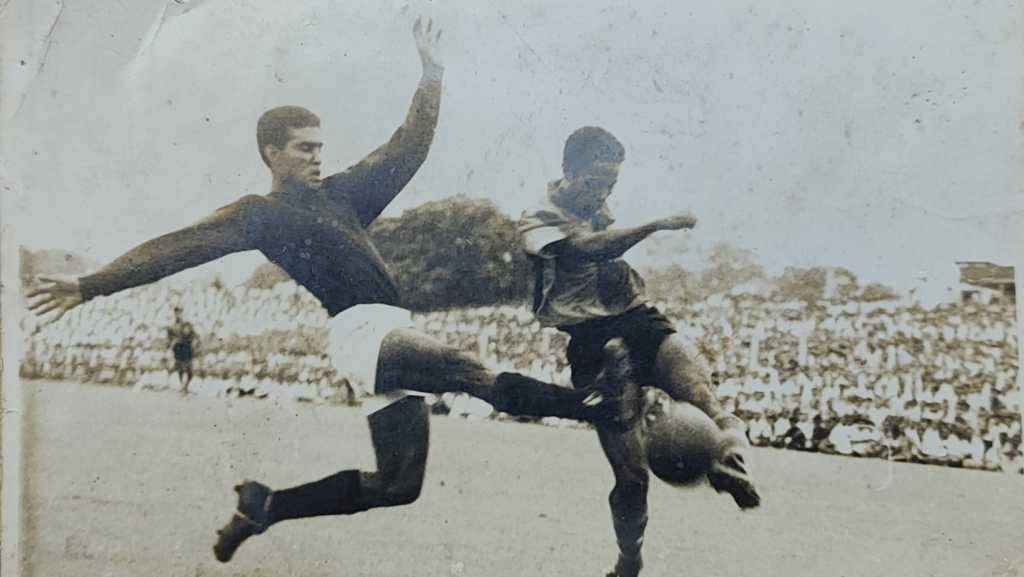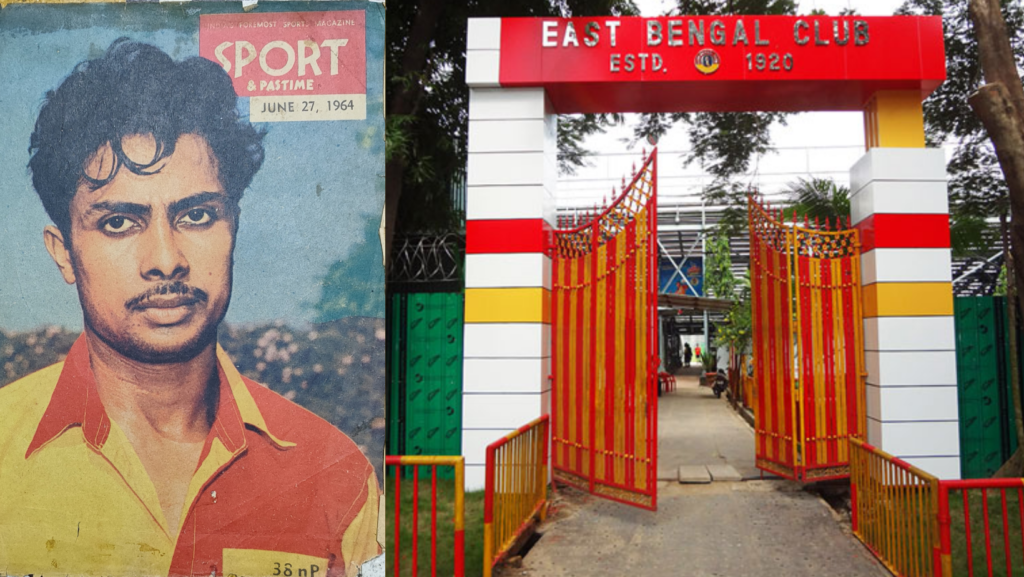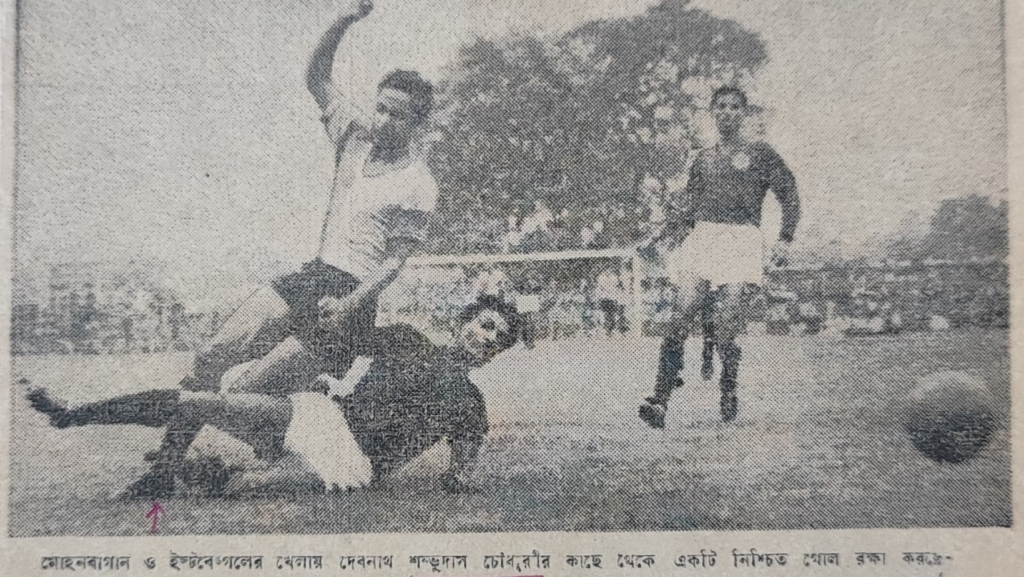On this day 104 years ago, Suresh Chandra Chaudhury along with some other prominent names established a club ‘for’ the people who had shifted from the erstwhile part of India and then Pakistan, which is now known as Bangladesh.
A difference in opinion led to the genesis of the club. On July 28, Jorabagan Club was set to play Mohun Bagan in the Coochbehar Cup, but the management fielded a team excluding defender Sailesh Bose, for reasons undisclosed. Chaudhury, the vice-president of Jorabagan Club, along with Raja Manmatha Nath Chaudhuri, Ramesh Chandra Sen and Aurobindo Ghosh left the club and formed East Bengal on August 1, 1920. The name was chosen to represent the people who had migrated from the eastern part of undivided Bengal. It also marked the beginning of a legacy in Indian football, which has survived the test of time.
History of the Red and Gold jersey
After the inception of the team, there was a pressing need for a jersey. During that time, attractive jerseys from England were imported, costing around Rs 20-25 per set. Chowdhury and Ghosh scoured the Esplanade area in central Calcutta but didn’t find anything that pleased them. Eventually, they went to a departmental store called Whiteaway Laidlaw, where a red and yellow jersey caught their attention. They were impressed by the vibrant colour combination and the golden glow of the yellow. The duo immediately finalised a deal, although the cost shot up to Rs 80 (from East Bengal archives). Thus started the journey of the Red and Gold brigade.
How I became an East Bengal fan
An average Bengali is either Mohun Bagan or East Bengal. It has got to do with their historical roots. Emotions ran wild even until a few years ago, although the craze has subsided a bit of late. Nonetheless, a match featuring these two still attracts thousands of fans. Many more follow on internet. For them, it’s not just about supporting a football club, but being part of a heritage. The ‘Ghotis’ are the original residents of the state of West Bengal. The ‘Bangals’ are those who came from Bangladesh. Over time, the divide has eroded. But once it’s Mohun Bagan versus East Bengal, old sentiments tend to come alive.
My connection with East Bengal stems from a young age when I was introduced to the club by my grandfather, Shri Sambhu Nath Das Chowdhury. He was an East Bengal player in the 1960s. Growing up, I was fascinated by football stories from that era. During that period when giants like Pele were dominating world football, India too had its share of skilled players who had mastery over ball control. Listening to grandpa’s tales, I realised that Indian football was also a joy to watch.
On the occasion of East Bengal’s birthday and my grandfather’s birthday, I wanted to document some lesser-known stories of the club’s history, as a tribute to my grandfather and the football of the region.
Rohan: Dadai (as I call him), how did you start playing?
Sambhu: I never got a chance even in my local team until my mid-teens. Nitai da, our neighbour, played in my position, which these days is referred to as left-winger. During my first year at Narasingha Dutta College, we had a match between the first-year students and fourth-year students. In the fourth-year team, there were three players who played in Kolkata’s 1st division. One of them was Sukumar Kanrar, who used to play for Howrah Union and later joined East Bengal.
In that match, I performed well and caught the attention of the scouts of the Dasnagar team. They selected me for a semi-final in a Howrah district tournament, where I scored two goals, helping the team win 2-0. In the final, we faced Shamiji Sangha, a team with several players from big clubs like Gopal Choudhury (Howrah Union goalkeeper), Chitta Chanda (East Bengal captain), Amiya Banerjee (Mohun Bagan), Arun Ghosh (East Bengal), Narayan Sanyal (East Bengal), Sunil Nandy (Mohun Bagan) and others.
The chief guest and the president of the tournament committee were the great Sailen Manna and Abid (of Mohammedan Sporting Club who played for India), respectively. In the final, I scored one goal, and the match ended 2-2. The trophy had to be shared. During the prize distribution, Abid came forward and hugged me, saying, “My boy! Welcome to the arena of Indian Football.” That moment is still vivid in my memory, just like it was in 1957.
Rohan: Great! When did you sign for a big club and when did you turn professional? And when did you join East Bengal?
Sambhu: I first signed for Howrah Union in the Calcutta Football League’s 1st division. There was a team called Manna’s XI, which was run by Sailen Manna. I played charity matches for them in 1958. In 1959, I joined Howrah Union, and during the 28-match league, I played in 15 and scored 13 goals. The interesting part was at the end of the season, the club gave me 10 rupees. I had no idea they would pay me. When I returned home and told my mother, I got quite a scolding for taking money to play, which was a taboo in some families.
The following year, I signed with Wari Club and played from 1960-1962. In 1963, I spent a year with Eastern Railway. After that, I received an invitation from East Bengal. In 1964 and 1965, I played for them.
Nowadays, there are a lot of discussions on transfer fees and bonuses. When I signed for Wari, they said they would pay me 600 rupees for the season. I was thrilled and went to tell my father. He said he won’t allow me to take money for playing football. But later, he and the club president Sandhya Prasad Sharma came to an agreement and got me a radio set from General Electric and arranged accommodation for me at the university hostel. That was actually my transfer fee. (Laughs)

Rohan: Comparing the current East Bengal team with the teams from your era, what differences do you see?
Sambhu: Current football is more physical and faster. There is no comparison in terms of financial support, infrastructure and facilities. However, the players we saw in our days were superior in terms of ball control and personal skills.
Rohan: Tell us about some East Bengal memories
Sambhu: Those two seasons at East Bengal were crucial and memorable chapters of my life. In two seasons, I scored 21 goals in the league, won trophies like IFA Shield and finished runners-up in Durand Cup. Some moments still bring tears to my eyes. On my debut for East Bengal, we faced Aryans, and their goalkeeper Sanat Seth was one of the best in India. With a left-footed effort, I scored a goal. The ball travelled faster than he had thought. Later, during his retirement, he mentioned, ‘I have played against many players, but never faced a shot like Sambhu’s.’ I will never forget those words.
Another memorable match was East Bengal versus Bata FC, where Sukumar Da (Samajpati) passed the ball to me from the right wing. I scored with a spectacular volley rising about five feet above the ground. The scene in the East Bengal gallery that day was unforgettable and I cherish the blessings and support I received from the fans.
There’s another story in my East Bengal chapter. The club paid me Rs 5,000 for a season and with those 10,000 rupees in two seasons, I built this house where we are having this conversation! (Laughs)
Rohan: Who was the best player of your times?
Sambhu: There were numerous great players and I am mentioning those I saw. The best goalkeeper was Seth. As side-back, T.A. Rahman was exceptional, and as stopper-back, Jarnail Singh stood out. In the half-back position, M Kempaiah was outstanding. Wingers P.K. Banerjee and Balaram were very good and Chuni Goswami was the best as inside-forward. As coach I would pick Amol Dutta. I would like to add that Prasanta Sinha was the best player I played with in East Bengal.
This conversation can go on. From such talks, I get a picture of the scenario of Indian football back in the 60s. Alas! We don’t have video footages from that era. But on this day, August 1, 2023, I wish my favourite club East Bengal best wishes on their foundation day and wish my grandpa, 84, a very happy birthday!

